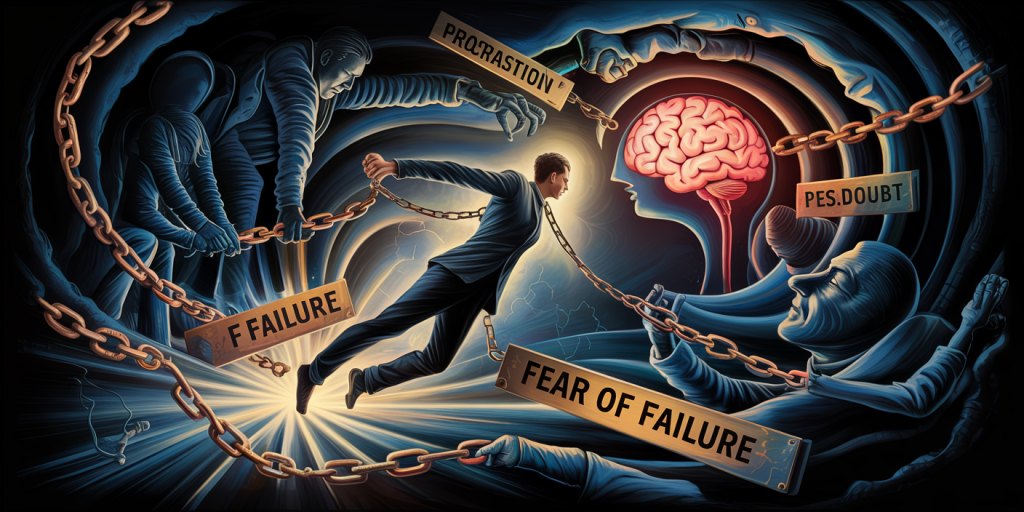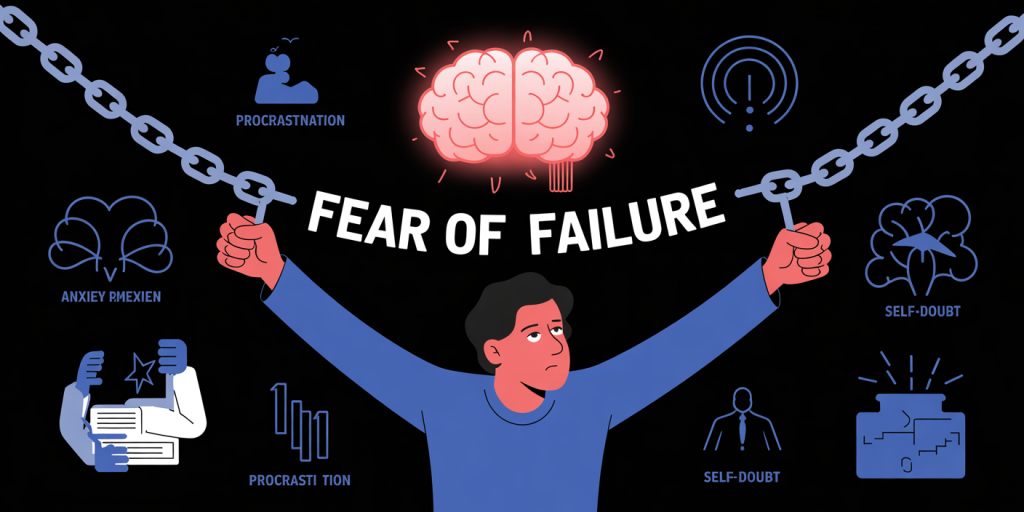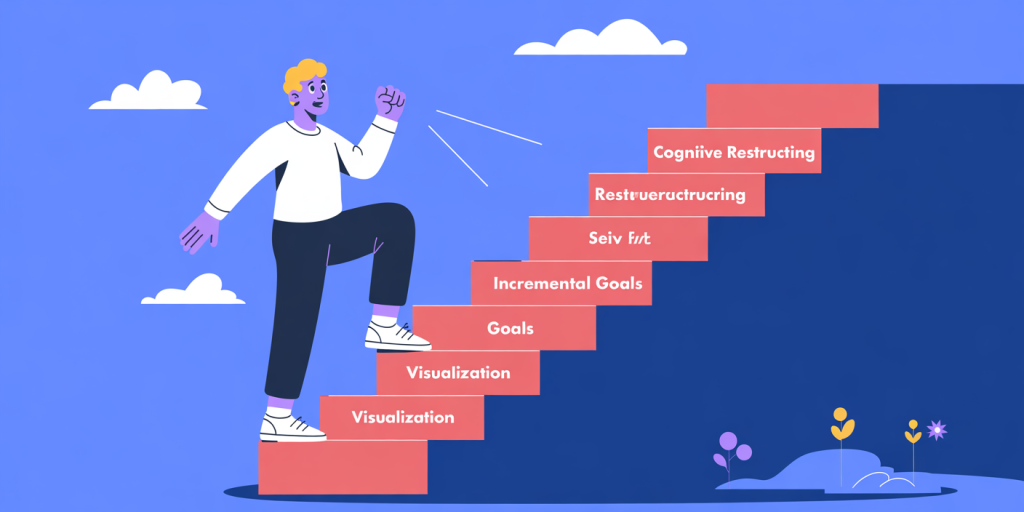How to Overcome Fear of Failure and Take Action Anyway
Fear of failure is a common barrier that prevents many individuals from pursuing their goals, taking risks, or even stepping out of their comfort zones. This fear, deeply rooted in the desire to avoid embarrassment, loss, or disappointment, can stifle creativity, growth, and success. According to a study by the University of Scranton, only 8% of people achieve their New Year’s goals largely because fear keeps the vast majority from taking meaningful action. Understanding how to overcome this fear is paramount to unlocking your full potential and advancing in personal and professional realms.
This article delves into the psychological underpinnings of fear of failure, offers actionable strategies to manage and overcome it, and provides real-life examples of people who have successfully taken steps despite their fears. We will also explore comparisons of methods to identify the best approach suited for different personalities, followed by emerging trends and future perspectives related to this topic.

Understanding Fear of Failure: Psychological Roots and Impact
Fear of failure stems from a complex interplay of cognitive and emotional factors. At its core, fear of failure is the anticipation of negative consequences, such as shame, rejection, or financial loss, that might arise from trying and not succeeding. Psychologists classify this fear as a form of performance anxiety, closely linked with perfectionism and self-esteem issues.
Research by the American Psychological Association (APA) estimates that around 50% of adults experience significant fear of failure that affects their life decisions. This fear can manifest in various ways: procrastination, avoidance of challenge, or even self-sabotage. For example, a budding entrepreneur may delay launching a product due to fear of market rejection. In the academic context, students avoiding advanced classes despite their interest due to fear of poor grades is another frequent scenario. The implications extend beyond lost opportunities; chronic fear of failure can escalate into anxiety and depression, further impairing motivation.
On a neurobiological level, fear activates the amygdala, the brain’s fear center, triggering a fight-or-flight response. This physiological reaction can cause an individual to avoid situations where their competencies may be tested, thus perpetuating a cycle of inaction and stagnation. Recognizing fear of failure as both a psychological and physiological response is the first step towards dismantling its hold.

Practical Strategies to Manage and Overcome Fear of Failure
Embracing failure as a learning opportunity rather than a dead-end is a game changer. One practical approach is cognitive restructuring, a technique used in cognitive-behavioral therapy, which encourages reshaping negative thought patterns. Instead of thinking “I will fail and everyone will judge me,” replace the thought with, “Failure is a step toward success, and every attempt teaches me something.” This mental shift reduces anxiety and fosters resilience.
Setting realistic and incremental goals is another powerful method. Breaking down daunting tasks into smaller, manageable actions reduces overwhelm and builds confidence. For instance, if someone fears public speaking, starting by practicing in front of a mirror, then moving to a small group, and finally addressing larger audiences can progressively desensitize fear hooks.
Visualization also enhances courage. Studies, including research by the University of Chicago, show that visualization of success increases one’s readiness to tackle challenging tasks. Athletes often employ this tactic to improve performance, and it applies equally in business or creative endeavors. Thomas Edison, known for his perseverance despite thousands of failed lightbulb prototypes, famously regarded each failure as a discovery of “what doesn’t work,” embodying the mindset shift necessary.
To illustrate, here is a comparative table of strategies highlighting advantages and contexts for effectiveness:
| Strategy | Description | Best Used For | Benefits | Limitations |
|---|---|---|---|---|
| Cognitive Restructuring | Changing negative thought patterns | Anxiety-driven fears | Reduces anxiety; improves mindset | Requires practice; may need guidance |
| Incremental Goal-Setting | Breaking tasks into smaller parts | Overwhelm or procrastination | Builds confidence; manageable steps | Slow progress might frustrate some |
| Visualization | Mental rehearsal of successful outcomes | Performance anxiety | Boosts motivation and readiness | May not address deep fear causes |
| Exposure Therapy | Gradually confronting feared situations | Severe avoidance behaviors | Reduces sensitivity to fear triggers | Can be distressing initially |
Learning from Real Cases: Turning Fear into Fuel for Success
Numerous prominent figures have navigated fear of failure and transformed it into a catalyst for success. J.K. Rowling, for instance, faced rejection from 12 publishers before “Harry Potter” was accepted. Instead of succumbing to fear, she persisted, propelling a phenomenon that has sold over 500 million copies worldwide. Her story highlights that resilience coupled with action can overcome deep-rooted fear.
Similarly, Elon Musk, CEO of Tesla and SpaceX, faced repeated failures in his ventures, including early rocket crashes and near bankruptcy. Musk openly discussed how he reframed failure as an essential and informative part of innovation. These examples prove the power of persistence and a growth mindset irrespective of the magnitude of initial failures.
In a more relatable scenario, Sarah, a mid-career professional, feared taking on leadership roles due to fear of inadequacy after a past project failure. To overcome this, she enrolled in leadership workshops, sought mentorship, and took on small team lead tasks to build competence and confidence gradually. Within a year, she successfully led key projects, eventually getting a promotion. Sarah’s experience resonates with many who find fear daunting but surmountable through stepwise action.
The Role of Environment and Social Support in Overcoming Fear
Environmental factors and the social circle play a crucial role in how individuals perceive and confront failure. A supportive environment that encourages risk-taking, rewards experimentation, and destigmatizes failure fosters bold action despite fear. According to a Gallup poll, employees in organizations that promote psychological safety are 27% more likely to take initiatives and innovate without fear of retribution for failure.

In contrast, toxic or overly critical environments amplify fear and reinforce avoidance. For example, students in highly competitive schools with punitive consequences for mistakes are more prone to fear-driven paralysis. Conversely, Google’s famous “fail fast” culture encourages teams to experiment and learn from failures quickly, reinforcing productive risk-taking.
Building a network of mentors, peers, and coaches who model resilience and share their own failure stories is another effective way to mitigate fear. Social support enhances emotional security, reduces feelings of isolation, and provides constructive feedback that can transform fear into strategic insight. The success of peer learning groups and mastermind circles exemplifies how collective encouragement propels individuals toward action despite fear.
Technological Tools and Resources to Combat Fear of Failure
In the digital age, numerous tools and resources help individuals confront and manage fear of failure. Apps like “Happify” and “Calm” incorporate cognitive-behavioral techniques, mindfulness, and stress reduction exercises that assist users in restructuring fearful thought patterns and calming anxiety.
Online platforms such as Coursera and Udemy provide access to resilience and leadership courses, offering structured guidance to build confidence in confronting challenges. Additionally, journaling apps promote self-reflection, enabling users to identify patterns related to fear triggers and track progress.
The rise of social media communities centered around personal growth and entrepreneurship also provides a virtual support network where users can share their struggles and successes anonymously or openly, normalizing failure and reducing stigma. Podcasts featuring interviews with successful individuals often reveal behind-the-scenes failure stories that demystify the path to success.
When combined with professional help, technology empowers individuals to take concrete steps toward overcoming fear of failure in a scalable and accessible manner.
Looking Ahead: Future Perspectives on Overcoming Fear of Failure
As awareness around mental health and emotional intelligence grows, future approaches to overcoming fear of failure will likely integrate more personalized and holistic methods. Advances in artificial intelligence (AI) promise customized coaching through conversational agents capable of delivering tailored cognitive-behavioral interventions around the clock.
Virtual reality (VR) technology is emerging as a frontier tool for exposure therapy and skill rehearsal in controlled environments, enabling users to safely confront fears in immersive scenarios. For example, VR simulations for public speaking or leadership challenges can desensitize fear responses and build competence faster than traditional methods.
Moreover, organizational cultures will continue evolving toward accepting failure as integral to innovation and learning. This shift will further diminish fear’s grip on employees and entrepreneurs alike, fostering environments where action is prioritized over perfection.
On an individual level, the fusion of neuroscience, psychology, and technology will enhance understanding of fear mechanisms and yield more effective strategies tailored to neurological and emotional profiles. Increased emphasis on mindset education from early childhood could also preempt instilling debilitating fear of failure before it takes root.
The future holds promise for a world where fear of failure no longer paralyzes but propels action and growth.

By understanding the multifaceted nature of fear of failure and applying strategic, evidence-based techniques, anyone can cultivate the courage to act despite uncertainty. Whether through cognitive shifts, support systems, or emerging technologies, the path to overcoming fear involves commitment to viewing failures not as endpoints but as stepping stones to success. Embracing failure’s lessons today prepares you for the breakthroughs of tomorrow.
